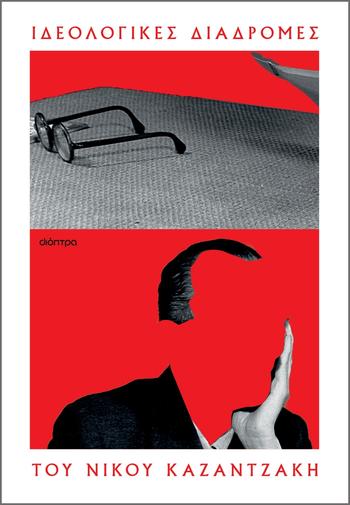Homo faber, salvator hominis. Για τη λογοτεχνική συναρμογή του 'Ανήφορου' (1946) του Νίκου Καζαντζάκη [Homo faber, salvator hominis. On the Literary Assemblage of 'The Ascent' (1946) of Nikos Kazantzakis]
Bart Soethaert – 2024
Nikos Kazantzakis greift in seinem Roman O aníforos [Der Aufstieg], der im Sommer 1946 in Cambridge geschrieben wurde, auf mehrere eigene Texte zurück. In seinem Beitrag analysiert Soethaert, wie der griechische Schriftsteller verschiedene seiner früheren Texte, darunter den Appell "The Immortal Free Spirit of Man" (1946) und längere Passagen aus Taxideúontas: Anglia [Travelling: England] (1940), einbezieht und umfunktioniert. Der Aufsatz konzentriert sich besonders auf die Art und Weise, wie Kazantzakis den gesamten Text von Askitikí [The Saviours of God. Spiritual Exercises] (1922/23, 1945) in den dritten Teil des Romans integrieren wollte. Es wird gezeigt, dass Kazantzakis das Entwicklungsschema von Askitikí – den mühsamen, aber unaufhörlichen Aufstieg des Menschen – als Blaupause für die Entwicklung des Protagonisten benutzt, die in der Komposition von Askitikí gipfelt. Die Implikationen dieser Verflechtung sowohl für die Entwicklung neuer Lesarten (angeregt durch Albert Camus' Re-Lektüre des Sisyphos-Mythos) der Askitikí nach dem Zweiten Weltkrieg als auch für die Organisation der Ideenwelt des autofiktionalen Romans O aníforos stehen im Mittelpunkt der Analyse.
When writing The Ascent in Cambridge in the summer of 1946, Nikos Kazantzakis drew on a number of other texts, the most important of which were his appeal "The Immortal Free Spirit of Man" (1946), addressed to all 'people of good will', and a selection from Travelling: England (1940). The author also intended to include the complete text of Askitikí ([1922/23], 1945, later published in English as The Saviours of God. Spiritual Exercises, 1960) into the third part of this novel. By focusing on the functional integration and adaptation of the texts, the book chapter highlights the process by which Kazantzakis emulated the general scheme of Askitikí as man's arduous but unceasing ascent, placing its writing as the culmination of the spiritual exercise of the novel's protagonist. In doing so, Kazantzakis not only devised new literary uses and anthropological readings for Askitikí in the post-World War II era, but also prepared a positive, contemporary and more international perspective for the novels for which he would become world famous.
How to cite:
Bart Soethaert. "Homo faber, salvator hominis. Για τη λογοτεχνική συναρμογή του Ανήφορου (1946) του Νίκου Καζαντζάκη". In Οι ιδεολογικές διαδρομές του Νίκου Καζαντζάκη, edited by Stavros Zoumboulakis, 97–131. Athens: Dioptra 2024.
